Development
The Type 37 torpedo boat was a class of nine torpedo boats built for the Kriegsmarine during the War, completed in 1941–1942 as improved version of the Type 1935. Almost half were lost in combat. Their first major action was in early 1942 for the “Channel Dash”. They also acted mostly as escort for commerce raider breakouts. One ended in a torpedo School and the others followed, but they were also active in Norway by early 1943 (as escorts) or transferred to France to lay minefields but were unsuccessful escorting Italian blockade runners through the Bay of Biscay. In 1944 when not refitting they became TS at the Torpedo School or U-boat flotillas and later supported German forces operating in the Baltic. One boat apiece was sunk in 1944 and 1945 and another was so badly damaged that it was written off as a constructive total loss and later scrapped. Five survived the war, distributed by the Allies as war reparations with the Soviet Union only to use one, later used as test ship until BU in 1960.
Design of the class
The Type 37 torpedo boat were designed as slightly improved version of the preceding Type 35. They were intended to have better range, but their great failing (easy to say in hindsight) was to use the same troublesome high-pressure Wagner boilers as the Type 35s. Countless maintenance issues were exacerbated by the lack of access to the machinery space due to pootly designed, restricted spaces to keep a lightly-built, narrow hull. As naval historian Michael J. Whitley put it
“the whole concept, with the benefit of hindsight, must be considered a gross waste of men and materials, for these torpedo boats were rarely employed in their designed role.”
Hull and general design
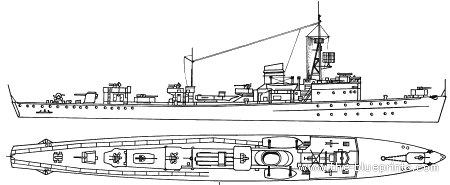
The Type 1937 torpedo Boats had an overall length of 85.2 meters (279 ft 6 in) versus 84.3 m (276 ft 7 in) for the Type 1935, due to they benefited from a clipper bow from the start.
They were otherwise 82 meters (269 ft) long at the waterline for a beam of 8.87 meters (29 ft 1 in), so more than the Type 35 at 8.62 m (28 ft 3 in), asn well as a comparable mean draft of 2.8 meters (9 ft 2 in) at deep load.
The Type 1937 displaced 888 metric tons (874 long tons) at standard load, 1,139 metric tons (1,121 long tons) at deep load, so significantly more tja, the Type 1939 (859 long tons/1,108 long tons).
The hull, like for the previous class, was divided into 11 watertight compartments underwater, meaning accesses from stern to stem was through the structure on the surface. The entire midship section was split in two (boilers and turbines) and occupied up to the weather deck, by the powerplant. As said above, there were few accesses below, and in general there were very cramped spaces making any servicing a painful and dangerous crawl. The hull also had a double bottom covering 75% of the length.
Given their new clipper bow, the most striking aspect of the design, they were considered excellent sea boats, very maneuverable. The crew amounted to 119 officers and sailors, but increased in wartime when they received extra AA in 1944-45, to the limit of what was possible for stability’s sake.
As for the detailed design description, they kept the same general outlook of the Type 1935, so much so allied observers had a hard time distinguidhing both classes, apart the bow, when visible.
They were indeed, like the Type 1935 “torpedo trucks” as designed. Artillery was an afterthought, as shown by their single main gun on the aft deck, and the general profile was a scaled-up Raumboote. So their main superstructure was the fowazrd blocky deck, that was as wide as the beam, flat, with an enclose deck and open wings on both sides. The forward deck was devoid of armament except a 20 mm AA autocannon later, behind a tarpaulin most of times as this deck was constantly washed over in moderate to bad weather. There was, on top of the enclose bridge, with wipers, a small “conning tower” with a telemeter for the main artillery. Above the map cab behind was installed the main tripod mast, outfitted with basic lights. Later in 1944-45 it supported two radars. Like the previous Type 1935 immediately behind was located the single funnel, capped, with two service boats under davits.
The crew could count of dozens of life rafts strapped wherever was handy. Aft of the funnel structure and small tower with a light projector and AA, were located the two axial triple torpedo tubes, separated by a small structure supporting AA and the aft mast, only there to support wireless radio cables hanging from the main mast. Then came a small quartedeck structure aft, supporting AA and the main shielded 105 mm gun on the aft deck. On this large deck was also installed a large winch. There were railings on either sides of the structure on deck, one port running longer, up to uner the funnel’s side service boat under davit, and the starboard rails ended short of the “A” torpedo tubes banks.
There were two anchors on deck forward with recesses, a bulwarked prow, transom stern, and anti-collision bars at the stern.
Powerplant
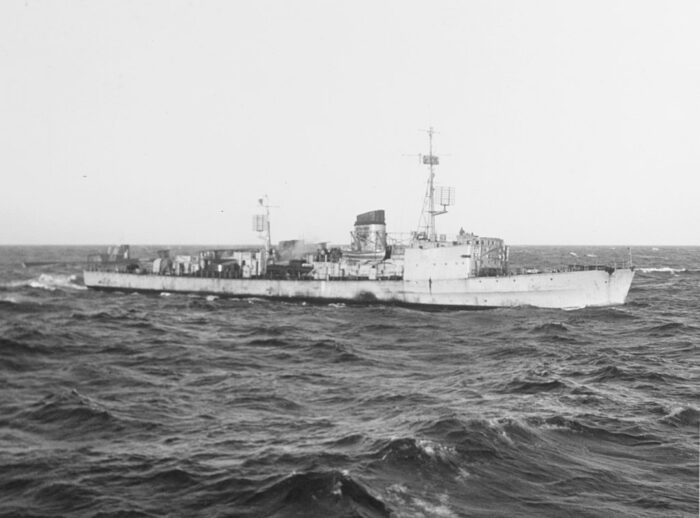
The Type 37s had two sets of Wagner geared steam turbines, like the Type 1935. They both drive three-bladed 2.45–2.6-meter (8 ft – 8 ft 6 in) unequal propellers. Seam came from four Wagner water-tube boilers in a separated room. The turbines were also separated by a longitudinal bulkhead. They boilers operated at a pressure of 70 kg/cm2 (6,865 kPa; 996 psi) and temperature of 460 °C (860 °F). This powerplant was contracted to produce 31,000 shaft horsepower (23,000 kW). Top speed was to be in exceess of 35 knots (65 km/h; 40 mph) for fleet operation. Note this was barely enough to keep up with the fast Scharnhost class battleships in heavy weather as shown by the Channel dash. The Type 1937 Torpedo boats carried 200 metric tons (197 long tons) of fuel oil, which was more than the Type 1935 and main point of the design. This gave them a range of 1,600 nautical miles (3,000 km; 1,800 mi) at 19 knots (35 km/h; 22 mph) versus 1,200 nmi (2,200 km; 1,400 mi) (same speed) for the Type 1935. This gave them a bit more “legs” for minelaying missions close to Britain or escorts to the north of Norway or Bay of Biscaye since brest for example.
Armament
As built, the Type 37 class torpedboote had the same armament as their predecessor with a single 45-caliber 10.5 cm (4.1 in) SK C/32 gun under mask at the stern. The idea was to fire torpedoes and then fire this gun in defence, when presenting their stern while withdrawing at full speed, under cover of smoke on both ways.
The second layer was the Anti-aircraft armament, with initially a modest single 80-caliber 3.7 cm (1.5 in) SK C/30 anti-aircraft (AA) gun superfiring over the 10.5 cm gun aft. It had an hand-operated mount and single-shot with a rate of 30 rounds per minute.
This was completed, again like the Type 1935, by a pair of 65-caliber 2 cm (0.8 in) C/30 AA guns on the bridge wings, and these were autocannons with a 120 rounds per minute rate. But their 0.12-kilogram (0.26 lb) shells had a limited muzzle velocity of 875 m/s (2,870 ft/s) and barely accurated at max 3,700 meters (12,100 ft).
Like the previous design, their main asset was a pair of above-water triple 533 mm (21 in) torpedo tubes amidships. They launched the standard G7a and sub-types.
This was completely by the potential to carry 30 mines, or 60 in good weather.
10.5 cm/42 (4.1 in) SK C/32
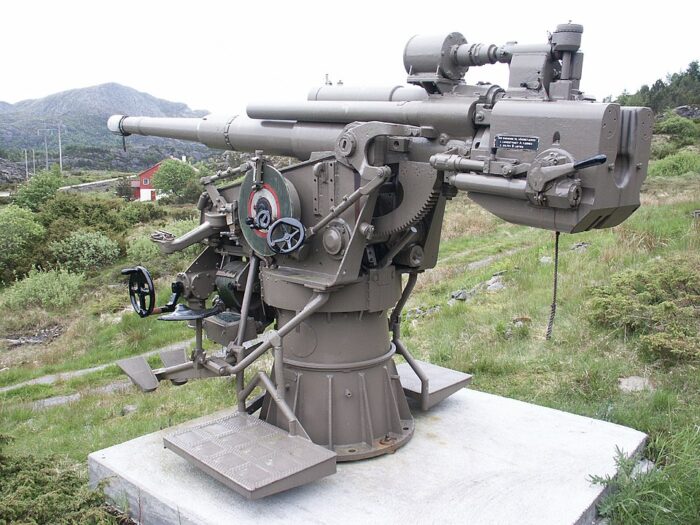
As built, the Type 1935 mounted a single 42-caliber 10.5 cm (4.1 in) SK C/32 gun on the aft deck.
Weight and size: 1,585–1,785 kgs (3,494–3,935 lb), 4.74–4.86 meters (15 ft 7 in – 15 ft 11 in)
Elevation: -10° to +50° on mount MPLC/32.
Shell: 15.1-kilogram (33 lb)
Muzzle velocity: 785 m/s (2,580 ft/s)
Range: 15,175 meters (16,596 yd) at 44.4°.
100 shells were provisioned.
3.7-cm FLAK C/30
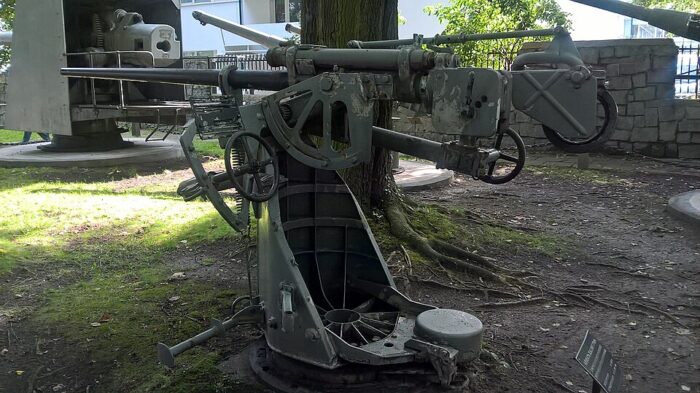
Anti-aircraft defense was provided by a single 80-caliber 3.7 cm (1.5 in) SK C/30 anti-aircraft (AA) gun superfiring over the 10.5 cm gun. Hand-operated mount, superfiring over the 10.5 cm gun aft.
Maximum elevation: +80°
Ceiling: 6,800 metres (22,300 ft)
Range: 8,500 metres (9,300 yd)/35.7°.
Shell: 0.748-kilogram (1.65 lb)
Muzzle velocity: 1,000 m/s (3,300 ft/s)
Rate of fire: 30 rounds per minute.
2-cm FLAK C/30 (1931)

Two 2-cm (0.8 in) C/30 anti-aircraft guns were installed individual posts in the bridge wings forward. Each boat carried 2,000 rounds per gun.
Weight and size: 450 kg (990 lb), 4.08 m (13 ft 5 in).
Rate of fire: 120 rounds per minute practical, 280 cyclic.
Shell: 0.12-kilogram (0.26 lb) HE, muzzle velocity 875 m/s (2,870 ft/s)
Ceiling: 3,700 meters (12,100 ft)
Range: 4,800 meters (5,200 yd).
533 cm (21 inches) TTs
As completed, the two triple torpedo tube banks 53 cm (21 in) were compatible with all interwar models, in that case, the G7a torpedo:
G7a torpedo Specs
:
Weight: 3,369 lbs. (1,528 kg), Negative Buoyancy 605 lbs. (274 kg)
Dimensions: 23 ft. 7 in. (7.186 m)
Propulsion: Decahydronaphthalene (Decalin) Wet-Heater
Warhead: 617 lbs. (280 kg) Hexanite.
Guidance: Federapparattorpedo; 1944 Lagenunabhängiger Torpedo
Warhead: 300-kg (660 lb)
Speed/range settings: 14,000 m (15,000 yd)/30 knots; 8,000 m (8,700 yd)/40 kts; 6,000 m (6,600 yd)/44 knots.
Mines
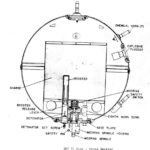 They could also carry now up to 60 mines, versus 30 on the Type 23/24. These were likely EMC Contact Mines, placed on trolley rails. Spherical mines, 44 inch (1.12 m) in diameter. Charge 661 lbs. (300 kg). 7 Hertz horns. Could be moored in 55, 109, 164 or 273 fathoms (100, 200, 300 or 500 m). First captured by the British in October 1939. more on navweaps
They could also carry now up to 60 mines, versus 30 on the Type 23/24. These were likely EMC Contact Mines, placed on trolley rails. Spherical mines, 44 inch (1.12 m) in diameter. Charge 661 lbs. (300 kg). 7 Hertz horns. Could be moored in 55, 109, 164 or 273 fathoms (100, 200, 300 or 500 m). First captured by the British in October 1939. more on navweaps
Armament Upgrades (1941-44)
by early 1942 on T13, 15-17 on aft TT bank was landed for the installation of a Flakvierling 20mm/65 C/38 mount on a banstand. It seems the TT banks was resinstalled by late 1942 however, but by 1943 all had the Flakvierling rinstalled with two extra 20mm/65 C/38 to boot. by late 1944, T13 and T18 lost again their aft TT banks for a single 40mm/56 FlaK 28 (a German Bofors copy).
Up to 1945, T14, 18, 19, 20 had their main gun still, but the 37mm/80 aft replaced by two 37mm/57 FlaK M/43, a single 533mm TT bank left, a Flakvierling 20mm/65 C/38, two more 20mm/65 C/38, and two 86-rockets Ag M42/43 AA launcher (Only on T14 and T20). The combo of a single 37mm/80 and two 37mm/69 FlaK M/42 and Flakvierling was constant, but some lacked the RL and only had from three to five 20mm/65 C/38. T19 was the only one with a 40mm/56 FlaK 28 and two 37mm/57 FlaK M/43.
Sensors (1944)
By 1942, all received the FuMO 28 radar. In 1944, survivors were given two FuMB 63 radars, a FuMB 4 Sumatra, and a FuMB 6 Palau ECM suite.
FuMB Ant 4 “Sumatra”
FunkMessBeobachtung: Passive Radar detector. Broad-band diagonal antennas. 1943, broadband dipole. It has flat, drop-shaped branches mounted in front of a reflecting area. In order to receive horizontally as well as vertically polarized waves, the dipole is tilted. Its reception angle is +- 50 degrees. To be able to survey the whole area, the antennas of the Sumatra installation are mounted on all four sides of the ship.
FuMO 63
FunkMessOrtung. Active Radar. Could be detected. Small type, Hohentwiel-K.
FuMB 6 Palau
This large matress style radar was installed on the tripod’s main leg foremast spur. The smaller FuMB 3 Bali was installed mid way across the mast above.
Modifications (1944-45)
Early wartime modifications:
-Foremast conferted as a tripod mast
-Installation of a FuMO 28 radar with fixed antennas 45° either side
-2 cm FLAK 38 autocannon one platfirm superfiring over the main gun.
Prior to the Feb. 1942 Channel their aft torpedo tubes were nominally replaced by a Fakvierling 2 cm gun mount.
May 1942: Installation of the superfiring position, refit of T13 and T14 in June.
November 1942: T13 and T17 received an additional 3.7 cm gun on their forecastle
1944: 3.7 cm mount on the searchlight platform amidships, on T19, T18 and T21
September 1944: Installation of a 3.7 cm Flak M42 or the Flak M43 gun ordered in place of the aft torpedo tubes in surviving boats
1945: Installation of additional 4 cm (1.6 in) Bofors guns for some.
1945: Addition of twin 2 cm gun mounts instead of single mounts, bridge wings.
1945: Two 3.7 cm or 4 cm guns for all surviving TBs.
⚙ Type 1937 specifications |
|
| Displacement | 888 t (874 long tons) standard, 1,139 t (1,121 long tons) deep load |
| Dimensions | 85.2 x 8.87 x 2.8 m (279 ft 6 in x 29 ft 1 in x 9 ft 2 in) |
| Propulsion | 2 shafts geared steam turbines 4× water-tube boilers 31,000 shp (23,000 kW) |
| Speed | 35 knots (65 km/h; 40 mph) |
| Range | 1,600 nmi (3,000 km; 1,800 mi) at 19 knots (35 km/h; 22 mph) |
| Armament | 1x 10.5 cm gun, 1x 3.7 cm, 2× 2 cm AA, 2×3 533 mm TTs, 30–60 mines |
| Crew | 119 |
Assessment
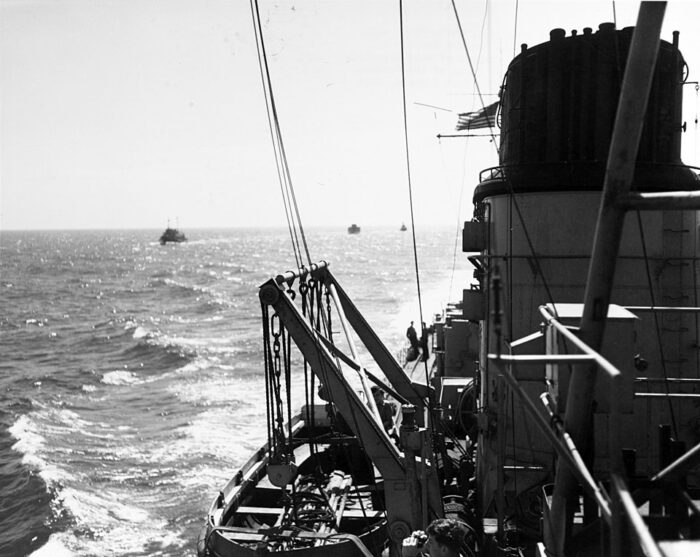
Ex-German ships in the North Sea, 2 July 1946, en route from Nordenham, Germany to be scuttled with a load of poison gas, photographed from the bridge of a torpedo boat (probably T-21). In distance is “Kriegs-Sperrbrecher” KSB-3 under tow of a tug. Note: T-21 was scuttled on 16 December 1946 in the Skagerrak.
All these boats were completed much larter than anticipated due to the declaration of war, full mobilization, which drained men and resources from shipyards in Germany. The citation earlier is also reflective of their career, as indeed they almost never once made a torpedo run as initially intended. Their career was also marred by the usual powerplant issues (mostly their unreliable Wagner Boilers) so much so they were sidelined and sent to the torpedo school at several point. Early in their career they acted as convoy escort in the Baltic, a mission they were ill suited for. They had a single gun, a weak AA, no ASW weapons at all not even a sonar. In 1941, T14 was the first to see combat. She helped to escort the commerce raider KMS Thor through the Channel and into the Atlantic by December 1941. Another interesting action was on the morning of 12 February 1942, when the 3rd Torpedo Boat Flotilla (with T13, T15, T16 and T17) were ordered to escort the battleships Gneisenau and Scharnhorst plus heavy cruiser Prinz Eugen from Brest and through the Channel, back to Germany in what became the “Channel Dash”. It was a success for the Kriegsmarine and embarrassment for the RN.
The following month, T15, T16 and T17 were sent to Norway, again, for escort duties but T13 remained in France and joined T14 in the 3rd Torpedo Boat Flotilla to lay minefields in the Channel. She also escorted a replenishment oiler through the always dangerous Bay of Biscay (infested by the RAF, Coastal Command and British subs ambushing the Gironde estuary). This was first of many unsuccessful attempts to pass into the Atlantic. T18 and T19 were training ships for the Torpedo School from May to September until transferred to France so that the flotilla could better help blockade runners through the Bay of Biscay, notably en route to Japan in September–October 1942. Komet though the Channel was a failure in October when intercepted by a British force of five escort destroyers, eight MTBs. T15 was also assigned to the Torpedo School in August 1942 but spend most time in refit.
By early 1943, T16, T20 and T21 were in Norway, always for escort duties, filling the role of destroyers. T16 wa sbacl in Germany for a long overhaul and demoted as TS for U-boat flotillas followed by two more in October 1943 and the Torpedo School. In March 1943, T13 and T17 also were sent to Germany for long refits and with the Torpedo School until mid-1944 but T18 remained in France by July, failing to protect the blockade runner Himalaya, and laying minefields in the Channel. By June–August 1944 she was in the Bay of Biscay escorting U-boats and ended in the 5th Torpedo Boat Flotilla, laying minefields in the Channel by September. No D-day intervention, but T14 after the allied breakout she was summoned back to Germany through the Channel by November and also ended with the Torpedo School while T15 was sunk by allied bombers in Kiel by December 1944.
In May 1944, T21 was first assigned to the Marineoberkommando Ostsee (Baltic Command), followed by all remainder TBs, to the 3rd Torpedo Boat Flotilla. They were tasked to do whatever possible to support delaying operations facing overwhelming advancing Soviet forces. T13, T18 and T20 made a raid on 12–13 September after the Finnish PM Antti Hackzell, broke off diplomatic relations and ordered German forces to leave Finland. This cost T18, sunk by Soviet aviation. On 23 September, T13, T17, T19 and T20 escorted the last evacuation convoy from Tallinn in Estonia and on 10–12 and 13–15 October, T13, T16, T20 and T21 escorted the cruisers Lützow and Prinz Eugen for a bombardment mission on advancing Soviet troops near Memel. T13, T19 and T21 escorted Lützow for the same at Sworbe and Saaremaa on 23–24 October. T13, T16, T19 and T21 escorted Prinz Eugen and Admiral Scheer on the Sworbe on 20-24 November. By December, T20 was in refit in Elbing, never comleted. She was towed out by February 1945 to Deschimag. The 3rd Flotilla was transferred to the Skagerrak in escort/minelaying missions in the North Sea and on 3 April, T16 was badly damaged by British heavy bombers, written off. 9/10 April saw T13 having the same fate, sinking, while T17 accidentally sank U-235 with depth charges but on 5 May with T19 helped ferrying some 45,000 refugees from East Prussia to Copenhagen in several runs, then 20,000 more to Glücksburg.
T14, T16, T17, T19, T20 and T21 survived the war in various states. T16 was BU by the Danes in 1946. T21 scuttled by the US. T14 and T20 were allocated to France, then the US United States and Britain but retunrned in 1941, never used and stricken in 1951. The Danes purchased T19 from the US still, but she was not sued and BU in 1950–1951. The Soviet Navy had T17 in service in the Baltic Fleet as the TS Poryvisti from 1946, converted into a target control ship in 1949 and used until BU in 1960.
Career of the Type 1937
 T13 (1939)
T13 (1939)
T13 was laid down at Schichau, Elbing, on 26 September 1938, launched on 15 June 1939 and completed on 31 May 1941. She was sunk 10 April 1945 in Skagerrak by an air attack. She worked up until October 1941, was transferred to the Baltic for convoy escort duties, then to France in early 1942. On 12 February as part of the 2nd and 3rd Torpedo Boat Flotillas (in which she was with T15, T16, and T17) she was tasked to escort Gneisenau, Scharnhorst, Prinz Eugen in the “Channel Dash”. After this success (they were engaged but largely unscathed), T13 started a refit in Rotterdam until July 1942 then back to France and on 20–22 July she laid two minefields in the Channel and on 1–2 August. She escorted the oiler Ermland in her unsuccessful attempt to break out into the Atlantic through the Bay of Biscay (8–11 August). In September–October she joined T14, T18, T19 and T21 to escorts German blockade runners to Japan, but half failed.
Back to Germany in March 1943 for a refit in Hamburg until August, then was transferred to the Torpedo School until mid-1944, sent to the Baltic, 3rd TB (T13, T18, T20) making a show of foorce in the Archipelago Sea on 12–13 September after Finland’s PM Antti Hackzell, broke off diplomatic relations with Germany. On 23 September with T17, T19 and T20, she escorted the last evacuation convoy from Tallinn in Estonia. On 10–12 and 13–15 October with T16, T20 and T21, she screened Lützow and Prinz Eugen for their bombardment mission of Soviet troops near Memel. T13, T19 and T21 escorted Lützow for the same mission at the Sworbe, Saaremaa Idland on 23–24 October. With her own 3td TB and the 2nd TB, she escorted again Prinz Eugen and Admiral Scheer to cover the evacuation of Sworbe on 20-24 November. Her Flotilla was transferred to the Skagerrak, for convoy escort duties, like on the night of 9/10 April 1945, T13 and F7 escorted the transport ship SS Hansa I later savaged by RAF Handley Page Halifax bombersy off Læsø Island. T13 and the transport were both sunk on 10 April.
 T14 (1939)
T14 (1939)
T14 was laid down at Schichau (like all her sisters) on 5 November 1938, launched on 20 July 1939, completed on 14 June 1941. She worked out until December, was transferred to the west and by 3 December met T4 and T7 to escort the commerce raider Thor, later joined by T2 and T12 in the Schillig Roads. Thor attempted to go through the English Channel, delayed by heavy fog, and they arrived at Brest on the 15th. Thor proceeded into the Atlantic. T14 had a brief refit in April–May 1942 and returned to France. On 20–22 July her unit, the 3rd TB (with T13, T4 and T10) laid two minefields in the Channel as well as on 1–2 August. She also escorted the replenishment oiler Ermland (no breakout on 8–11 August). In September–October she escorted more blockade runners in the Bay of Biscay. With T19, and T4 and T10 she escorted the commerce raider Komet through the Channel on 13–14 October but during the battle that followed their attempt, she was struck by stray machine-gun fire from Komet in the confuson, loosing the flotilla commander and wounding several in the staff (she was the flagship in this mission).
In November 1943, she was assigned to the Torpedo School until a refit from February to 2 November 1944 and being reassigned to the 3rd TBF in October, still working up. She was tasked of escort convoys through the Skagerrak until the end of the war, when she was abandoned and captured by the allies. She was allocated to the US, by December 1945, but the latter had no interest in her, so she realoccated to France in September 1947. T14 became “Dompaire” in Cherbourg on 24 October but was never active, rather placed in reserve until stricken on 8 October 1951, scrapped.
 T15 (1939)
T15 (1939)
T15 was laid down on 3 January 1939, launched on 16 September 1939 and completed on 26 June 1941. Working up until December, she was then transferred to France. On the morning of 12 February 1942, the 2nd Torpedo Boat Flotilla (with T2, T4, T5, T11, T12) and the 3rd Torpedo Boat Flotilla (with T15 and her sisters T13, T16, and T17) met with Gneisenau and Scharnhorst and the heavy cruiser Prinz Eugen for successful the Channel Dash. In March, with T16, and T17 she was sent to Norway to escort the heavy cruiser Admiral Hipper to Trondheim (19–21). She also later escorted the heavy cruiser Lützow from Kristiansand to Trondheim on 18–20 May. She took part in Operation Rösselsprung wiht T7, escorting the battleship Tirpitz and Admiral Hipper from Trondheim to Altafjord by early July. Back in Germany in August she entered the Torpedo School in October and started a refit at Oderwerke shipyard, Stettin until February 1943 and back to the Torpedo School in April, then new refit in July–August and then assigned to U-boat flotillas in the Baltic. She acted asa stationary TS until sunk by American bombers in Kiel, on 13 December 1943.
 T16 (1939)
T16 (1939)
T16 was laid down on 1 February 1939 and launched on 20 November 1939 and completed 24 July 1941. Working up until January 1942 she was assigned to the 3rd TBF, sent to France and on 12 February, her unit met the 2nd Torpedo Boat Flotilla to escort the “terrible sisters” (Gneisenau and Scharnhorst) and Prinz Eugen in the Channel Dash. Next month with T15, and T17 she was sent in Norway to escort Admiral Hipper to Trondheim on 19–21 March. In May, T16 was back home to start a refit in Kiel until September. By 1–3 October 1942 she was in exercises in the Baltic Sea with Scharnhorst, and the cruisers Leipzig and Nürnberg, the destroyers Z25, Z31 and Z37. She operated with her sisters T17, T20, T21, T22 as well as Falke and Kondor. On 7 March 1943, with T20, T21, Greif and Jaguar, she escorted Scharnhorst in the Skagerrak, slowed sown by bad weather (stop in Bergen).
She was soon back home for a machinery overhaul at Kiel, until September. She became TS for the 23rd U-boat Flotilla in the Baltic. On 21 February 1944 she struck a mine off Memel (Klaipėda, Lithuania). Towed to port, she ended under repair at Oderwerke shipyard, Stettin (Szczecin) until August 1944. On 10–12 and 13–15 October 1944, her unit, the 3rd Torpedo Boat Flotilla (with T13, T20 and T21) screened Lützow and Prinz Eugen on their bombardment raid near Memel and later, covered by the 2nd and 3rd Torpedo Boat Flotillas Prinz Eugen and Admiral Scheer did the same during the evacuation of Sworbe, Saaremaa on 20-24 November. Next, she was transferred to the Skagerrak for convoy escort and on 3 April 1945, she was badly damaged by RAF Handley Page Halifax heavy bombers. She had to move to Frederikshavn for repairs, but there, inspected, she was written off as not worth the repairs, she was then towed to Aarhus also in Denmark postwar, BU from September 1946.
 T17 (1940)
T17 (1940)
T17 was laid down on 24 June 1939, launched on 13 March 1940 and commissioned on 18 August 1941. She was working up until October and transferred to the Baltic, in convoy escort duties. She was transferred to France in early 1942 and on 12 February took part in the Channel Dash. In 19-21 March she escorted Admiral Hipper to Trondheim and later started a refit in Kiel until September. On 1–3 October she took part in large exercises in the Baltic (see above). Back to France she was returned to Kiel by March 1943 for a new refit until July. In September she was assigned to U-boat flotillas in the Baltic. By February 1944 she was transferred to the Torpedo School interrupted by yet another machinery overhaul at Oderwerke shipyard, Stettin from June to August. Next she escorted the last evacuation convoy from Tallinn on 23 September 1944 with T13, T19 and T20. She was transferred to the Skaggerak for escort duties in Jan-Feb 1945. On 16-17 February, she was designated to escort two latter cancelled minelaying operations in the North Sea. With T19 and T20, she escorted one such mission on 17–18 March however, in which she accidentally sank the German submarine U-235 with depth charges on 14 April. On 5 May, she helped ferrying 45,000 refugees from East Prussia to Copenhagen and then 20,000 more to Glücksburg on 9 May.
The war ended and she was eventually allocated to the Soviets by late 1945, included as an active vessel on 5 November, assigned to the Baltic Fleet, recommissioned officially on 15 January 1946, as Poryvisty from 13 February, reassigned to the North Baltic Fleet but withdrawn on 25 June 1949 (probably due to her appealing marchinery issues), reclassified as a target control ship UTS-6 on 7 September, used as such until struck on 30 December 1959, sent for BU on 6 February 1960.
 T18 (1940)
T18 (1940)
T18 was laid down on 27 July 1939, launched on 1 June 1940 and commissioned on 22 November 1941. After working up she was assigned to convoy escort duties in the Baltic and then to the Torpedo School as training ship, from May to September 1942. Next she was transferred to France wuth T13, T14, T19 and T21 to escort German blockade runners through the Bay of Biscay, bound for Japan. With Falke, T2, T12 and T23 she trie to escort the Italian blockade runner Himalaya (spotted by British aircraft March 1943). On 5–8 May her unit, the 2nd Torpedo Boat Flotilla (with T2, T5 and T22) she laid three minefields in the Channel. Next she was back to the Bay of Biscay, escorting U-boats into the Atlantic. She was back to Germany on 1 July and reassigned to the Torpedo School, then TS for U-boat flotillas in September–November. She was refitted at Schichau (December 1943 to May 1944) reassigned to support operations in the Baltic with the 3rd Torpedo Boat Flotilla (with T13 and T20) notabky duering the “show of force” in Finnish waters on 12–13 September. But while back home, the fotilla was interercepted by a formation of Soviet fighter-bombers, equipped with underwings heavy rockets. T18 was hit by a broadside of such rockets (of the types used on Katyushas) and so devastated she was evacuated and later sunk.
 T19 (1940)
T19 (1940)
T19 was laid down on 23 September 1939, launched on 20 July 1940 and completed on 18 December 1941. She was still working up when assigned to the Torpedo School until September 1942 and transferred to France, escorting Axis blockade runners through the Bay of Biscay to Japan by September-October 1942 and on 13–14 October with T14, T4 and T10, she tried to escort the Hilfkreuzer KMS Komet through the Channel, until intercepted by a British force. T19 was struck by stray machine-gun fire from Komet, wounding several men. In June–August 1943, T19 was in the Bay of Biscay to escort U-boats for their breakout. She was assigned to the 5th Torpedo Boat Flotilla and helped lay two minefields in the Channel on 3–5 September with Kondor, Möwe, T25 and T27. Her flotilla (Greif, Kondor, T19, T26 and T27) laid another minefield on 29–30 September.
T19 started a refit while back home from October in Bremen to February 1944, then reassigned to the Torpedo School until June, escorting the last evacuation convoy from Tallinn on 23 September and later screened the heavy cruiser Lützow for the raids on Memel and Sworbe on 23–24 October. She was part of the escort (2nd and 3rd Torpedo Boat Flotillas) escorting Prinz Eugen and Admiral Scheer for the delaying action to help the evacuation of Sworbe on 20-24 November 1944. Next she was transferred to the Skagerrak for convoy escort and helped a minelayojng mission in the North Sea on 13–14 January 1945. With T17 and T20 she escorted another such mission on 17–18 March 1945 and on 5 May, she helped to ferry 45,000 refugees from East Prussia and 20,000 to Glücksburg on the 9th. Immobilized, seized after the capitulation she was allocated to the US, but resold to Denmark in 1947 (for $5,000) but the latter regretted the choice. She was intended as a flotilla leader for Danish MTBs, but given her general state she was never commissioned and mothballed, then scrapped in 1950–1951.
 T20 (1940)
T20 (1940)
T20 was laid down on 28 November 1939, launched on 12 September 1940 and commissioned on 5 June 1942. On 1–3 October she was in an exercises in the Baltic with Scharnhorst, Leipzig and Nürnberg (see above) and on 7 March 1943 with T16, T21, Greif and Jaguar, escorted Scharnhorst to the Arctic via the Skagerrak, halting in Bergen due to the heavy weather. T20 and T21 later escorted Tirpitz, Scharnhorst, Lützow from to the Altafjord on 22–24 March 1943. Back to Germany in October she was assigned to the Torpedo School until March 1944, then started a refit until August. Reassigned to the 3rd Torpedo Boat Flotilla (also T13, T18) she made a “show of force” in Finnish waters on 12–13 September but while back T18 was sunk by Soviet aircraft and she jelped rescuing part og her crew. On 23 September, T20, T13, T17 and T19 escorted the last evacuation convoy from Tallinn. On 10–12 and 13–15 October as part of the 3rd TBF she screened Lützow and Prinz Eugen for their raid near Memel. Next in the Skagerrak for convoy escort duties and in a minelaying mission on 13–14 January 1945, then on 17–18 March. In May she was in maintenance in port when the war ended. She was allocated to the British but transferred to France in February 1946, renamed “Baccarat” on 4 February but placed in reserve until stricken on 8 October 1951 and BU.
 T21 (1940)
T21 (1940)

T21 wa slaid down on 27 March 1939, launched on 21 November 1940 and completed on 11 July 1942. On 1–3 October, she conducted exercises in the Baltic with Scharnhorst, Leipzig and Nürnberg (see above). On 7 March 1943 with three sisters, Greif and Jaguar, she escorted Scharnhorst to the Arctic via Bergen. T21 and T20 escorted Tirpitz, Scharnhorst, Lützow from Narvik to the Altafjord on 22–24 March. Back in Germany in October 1943, she was assigned to the Torpedo School until April 1944. She made a few escort missions for the German forces in the Baltic and had a refit at Oderwerke shipyard from August to late September. On 10–15 October with the 3rd TB (also T16, T20, T13) she screened Lützow and Prinz Eugen for the raid on Memel and later wit the 2nd and Torpedo Boat Flotilla, she covered Prinz Eugen and Admiral Scheer for the evacuation of Sworbe on 20-24 November. In December 1944, T21 was in her last major refit in Elbing but evacuated in February 1945, was towed to the Deschimag shipyard in Bremen, never completed. She was decommissioned on 22 April 1945. Later that year she was allocated to the United States but never used, instead cannibalized for spare parts and then loaded up with a stock of never used German poison gas ammunition, scuttled with it in the Skaggerak on 10 June 1946.
Read More/Src
Note: The “catalog” of avilable creative commons, open source photos for the Torpedoboote 1937 is very poor, only two photos.
Hence the illustration to compensate the lack of iconography.
Books
Campbell, John (1985). Naval Weapons of World War II. Annapolis, Maryland: Naval Institute Press (NIP).
Friedman, Norman (2011). Naval Weapons of World War One: Guns, Torpedoes, Mines and ASW Weapons of All Nations.
Gröner, Erich (1990). German Warships 1815–1945. Vol. 1: Major Surface Warships. NIP
Haarr, Geirr H. (2010). The Battle for Norway – April–June 1940. Barnsley, UK: Seaforth Publishing.
Haarr, Geirr H. (2013). The Gathering Storm: The Naval War in Northern Europe September 1939 – April 1940. NIP
Haarr, Geirr H. (2009). The German Invasion of Norway, April 1940. NIP
Rohwer, Jürgen (2005). Chronology of the War at Sea 1939–1945: The Naval History of World War Two (Third Revised ed.). NIP
Sieche, Erwin (1980). “Germany”. In Chesneau, Roger (ed.). Conway’s All the World’s Fighting Ships 1922–1946.
Whitley, M. J. (2000). Destroyers of World War Two: An International Encyclopedia. London: Cassell & Co.
Whitley, M. J. (1991). German Destroyers of World War Two. NIP
Links
on navypedia.org
avalanchepress.com
german-navy.de
german-navy.de/kriegsmarine/ torpedoboats T1935/
https://www.drivethrurpg.com/en/product/301644/german-torpedo-boats-type-1935-1937-1939
http://www.navweaps.com/Weapons/WRGER_08.htm
Model Kits
HP models 1/77, T19 1945
modelland.co.uk/ wak-torpedoboot-t13-scale-1-200 paper
Niko Models T18 1/700

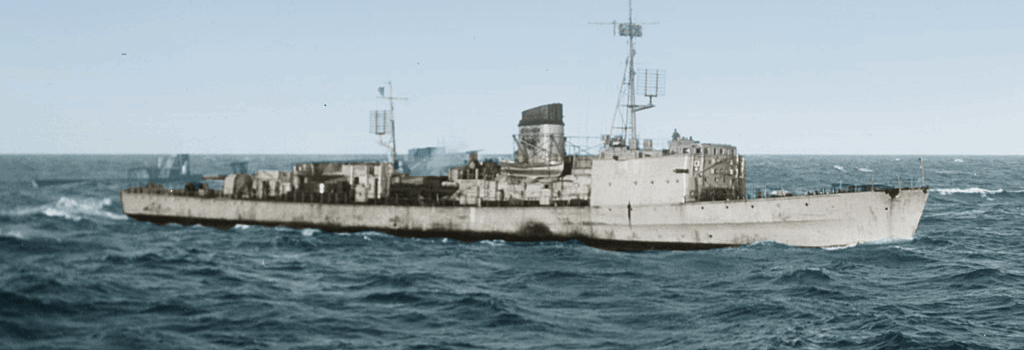


 Latest Facebook Entry -
Latest Facebook Entry -  X(Tweeter) Naval Encyclopedia's deck archive
X(Tweeter) Naval Encyclopedia's deck archive Instagram (@navalencyc)
Instagram (@navalencyc)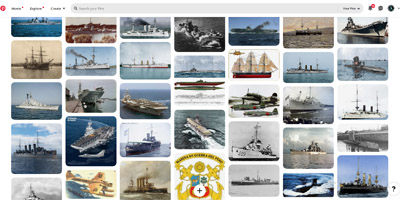

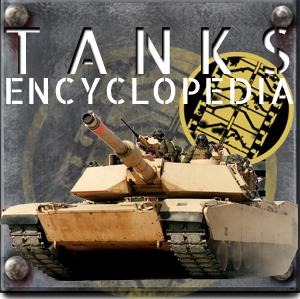
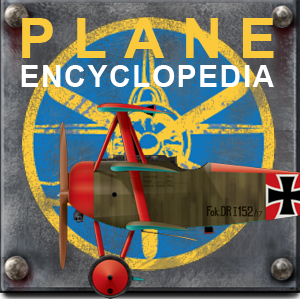
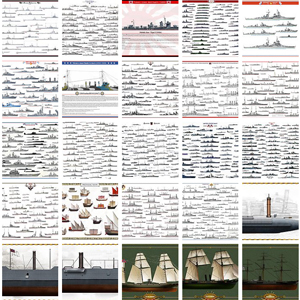
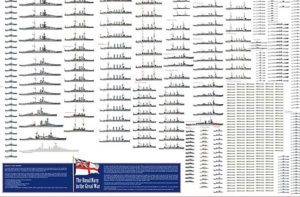
 French Navy
French Navy Royal Navy
Royal Navy Russian Navy
Russian Navy Armada Espanola
Armada Espanola Austrian Navy
Austrian Navy K.u.K. Kriegsmarine
K.u.K. Kriegsmarine Dansk Marine
Dansk Marine Nautiko Hellenon
Nautiko Hellenon Koninklije Marine 1870
Koninklije Marine 1870 Marinha do Brasil
Marinha do Brasil Osmanlı Donanması
Osmanlı Donanması Marina Do Peru
Marina Do Peru Marinha do Portugal
Marinha do Portugal Regia Marina 1870
Regia Marina 1870 Nihhon Kaigun 1870
Nihhon Kaigun 1870 Preußische Marine 1870
Preußische Marine 1870 Russkiy Flot 1870
Russkiy Flot 1870 Svenska marinen
Svenska marinen Søværnet
Søværnet Union Navy
Union Navy Confederate Navy
Confederate Navy Armada de Argentina
Armada de Argentina Imperial Chinese Navy
Imperial Chinese Navy Marinha do Portugal
Marinha do Portugal Mexico
Mexico Kaiserliche Marine
Kaiserliche Marine 1898 US Navy
1898 US Navy Sovietskiy Flot
Sovietskiy Flot Royal Canadian Navy
Royal Canadian Navy Royal Australian Navy
Royal Australian Navy RNZN Fleet
RNZN Fleet Chinese Navy 1937
Chinese Navy 1937 Kriegsmarine
Kriegsmarine Chilean Navy
Chilean Navy Danish Navy
Danish Navy Finnish Navy
Finnish Navy Hellenic Navy
Hellenic Navy Polish Navy
Polish Navy Romanian Navy
Romanian Navy Turkish Navy
Turkish Navy Royal Yugoslav Navy
Royal Yugoslav Navy Royal Thai Navy
Royal Thai Navy Minor Navies
Minor Navies Albania
Albania Austria
Austria Belgium
Belgium Columbia
Columbia Costa Rica
Costa Rica Cuba
Cuba Czechoslovakia
Czechoslovakia Dominican Republic
Dominican Republic Haiti
Haiti Hungary
Hungary Honduras
Honduras Estonia
Estonia Iceland
Iceland Eire
Eire Equador
Equador Iran
Iran Iraq
Iraq Latvia
Latvia Liberia
Liberia Lithuania
Lithuania Mandchukuo
Mandchukuo Morocco
Morocco Nicaragua
Nicaragua Persia
Persia San Salvador
San Salvador Sarawak
Sarawak Uruguay
Uruguay Venezuela
Venezuela Zanzibar
Zanzibar Warsaw Pact Navies
Warsaw Pact Navies Bulgaria
Bulgaria Hungary
Hungary

 Bundesmarine
Bundesmarine Dutch Navy
Dutch Navy Hellenic Navy
Hellenic Navy Marina Militare
Marina Militare Yugoslav Navy
Yugoslav Navy Chinese Navy
Chinese Navy Indian Navy
Indian Navy Indonesian Navy
Indonesian Navy JMSDF
JMSDF North Korean Navy
North Korean Navy Pakistani Navy
Pakistani Navy Philippines Navy
Philippines Navy ROKN
ROKN Rep. of Singapore Navy
Rep. of Singapore Navy Taiwanese Navy
Taiwanese Navy IDF Navy
IDF Navy Saudi Navy
Saudi Navy Royal New Zealand Navy
Royal New Zealand Navy Egyptian Navy
Egyptian Navy South African Navy
South African Navy






























 Ukrainian Navy
Ukrainian Navy dbodesign
dbodesign